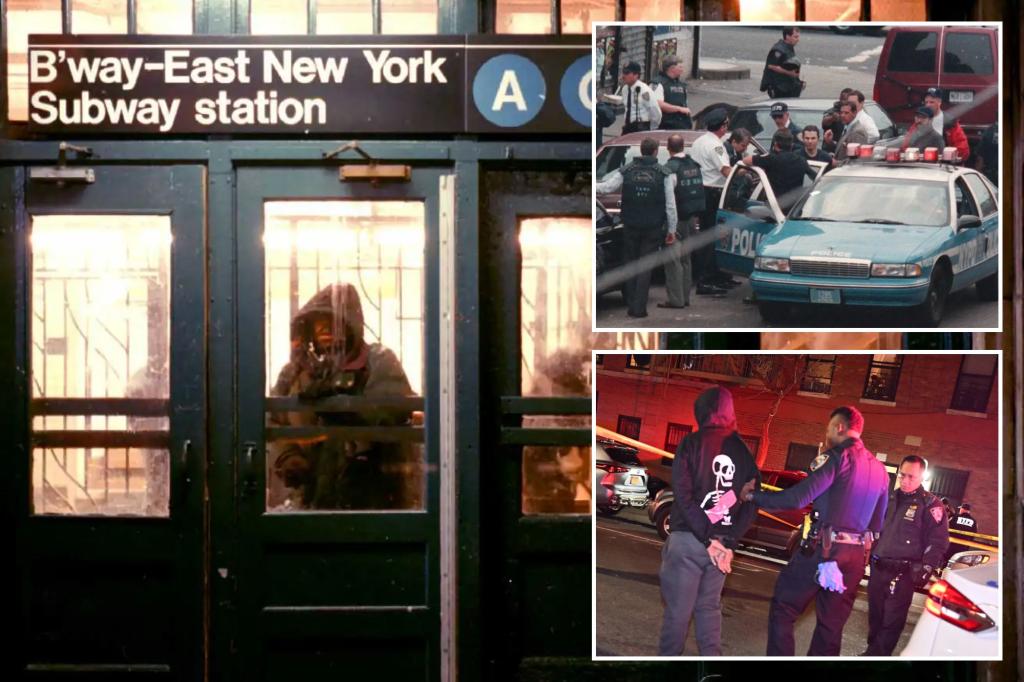East New York has a reputation for violence — with good reason. The 75th precinct has a violent crime rate that’s 84% higher than New York City as a whole and 279% higher than the rest of the country, according to FBI data.
It wasn’t always this way. During the early 20th century, it was a thriving community of German, Italian, and Jewish immigrants, where neighbors treated each other like family, and kids could play safely in the streets.
But that began to change in the 1960s, largely due to racist, predatory lenders that changed both the neighborhood’s demographics and the financial stability of its residents, as Stacy Horn reveals in her new book, “The Killing Fields of East New York: The First Subprime Mortgage Scandal, a White-Collar Crime Spree, and the Collapse of an American Neighborhood” (Zando/Gillian Flynn Books; Jan. 28th).
When the area was founded in 1835 by shoe merchant John Pitkin — who “imagined he could turn the quaint Brooklyn town he’d just bought into a glittering metropolis,” writes Horn — he published a letter in a local newspaper, promising that East New York was a place where “a poor man may purchase in a healthy country, with delightful water, and ocean air, a lot of ground,” for a lot less than they’d pay for “a miserable hovel” in Manhattan.
For a time, it was exactly that, “an almost enchanted place where you could arrive with nothing and work to build something,” Horn writes.
But, by the late 1960s, 160,000 people were living in East New York, and the neighborhood was becoming increasingly crime-ridden. Barry Kestenberg, who grew up in the area, told the author that during his youth in the ‘70s, “you couldn’t walk down the street.”
Some of it happened because of drugs and rising poverty. But Horn suggests that the ultimate trigger for East New York’s downfall was “two racist financial practices that had ramped up in the fifties and sixties: blockbusting and redlining.” Brokers had managed to convince white homeowners that if black families moved into their neighborhood, it would cause crime to skyrocket and property values to plummet.
“They’d parade a Black family down the street to scare white homeowners into selling cheap, then sell the homes to struggling African Americans at inflated prices and pocket the difference,” Horn writes. “Once a neighborhood became predominantly black (or Puerto Rican), banks would literally draw red lines around the neighborhood boundaries, term everyone living within high credit risks, and automatically disqualify them for mortgages, credit, and other financial services.”
This practice led to rising violent crime, and by the early ’90s, the victims were increasingly children. On July 17, 1991, Julia Parker, a popular 17-year-old high school student in East New York, was murdered in broad daylight, shot in the head while sitting on a car hood at the corner of Pennsylvania and Dumont.
Parker’s murderer was never caught or even identified. That same year, there were 116 murders on the streets of East New York, and 43 of them remain unsolved. It was the beginning of a decade that earned the Brooklyn neighborhood the uninviting nickname “the Killing Fields of New York,” becoming the precinct with the highest number of unsolved murders in all of New York.
By 1993, East New York hit a record with 128 individual murders, the highest number to date in any one precinct in NYPD history. Those 128 murders included victims like 17-year-old Toya Gillard, shot in the head while trying to save her two-year-old son. (Her assailant was another child, just 13-years-old.)
The death toll also included 45-year-old James Dyson, shot while working as a security guard “protecting abandoned buildings on Sheffield Avenue that were being renovated by ACORN [Association of Community Organizations for Reform Now],” Horn writes. “When ACORN couldn’t find anyone willing to take his place, ConEd refused to send men to complete the electrical work. After the buildings were finally completed, it took them a while to find anyone brave enough to move in.”
That same year, a sergeant in the 75th precinct allegedly said during a retirement party, “I’d like to thank all the young men in East New York who gave their lives so I could buy my house.” (He’s denied saying it.)
There is some hope. While the crime rate in East New York remains high and locals still have to be careful where they walk and when, things have been improving. In 2024, the number of murders fell by at least 48% according to the Brooklyn District Attorney’s office, but the unsolved murders from decades ago still cast a shadow.
“[The neighborhood] continues to struggle under the traumatic weight and unconscionable number of all those unanswered crimes,” Horn writes. “Mention Julia to her mother and she collapses into sobs that wrack her body so violently she struggles to breath. Multiply that by the mothers, fathers, brothers, sisters, and friends of nearly twelve thousand other victims, and you have an idea of the cataclysmic toll.”
Read the full article here


